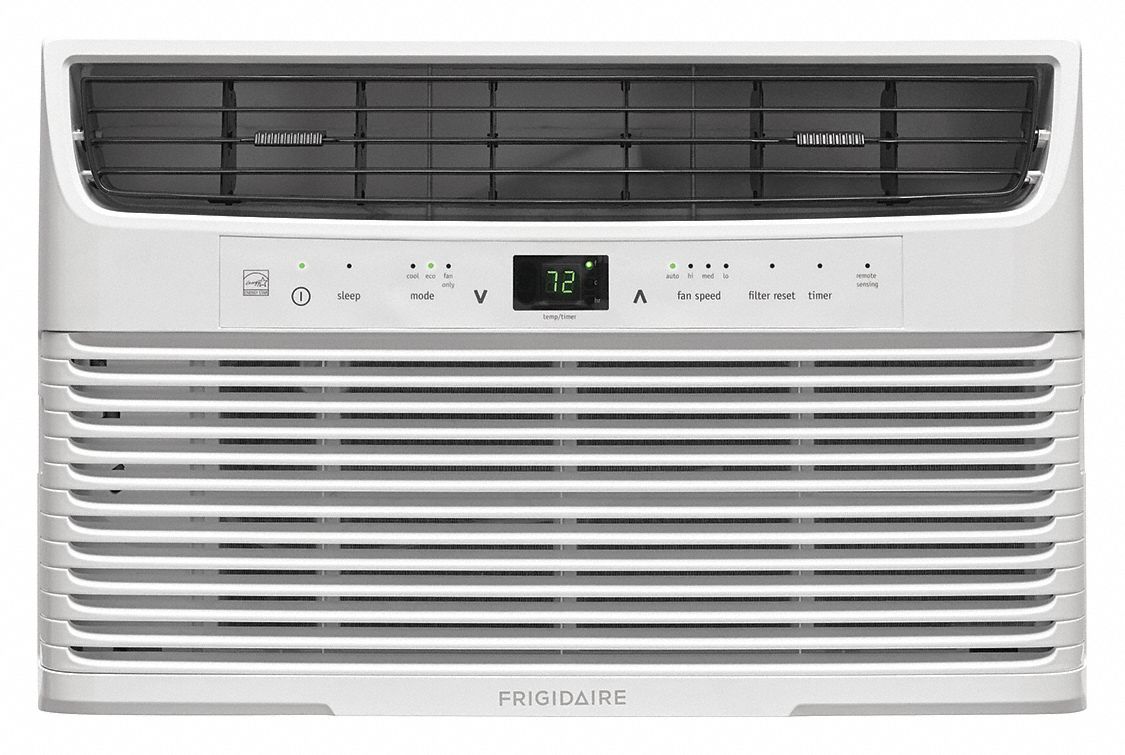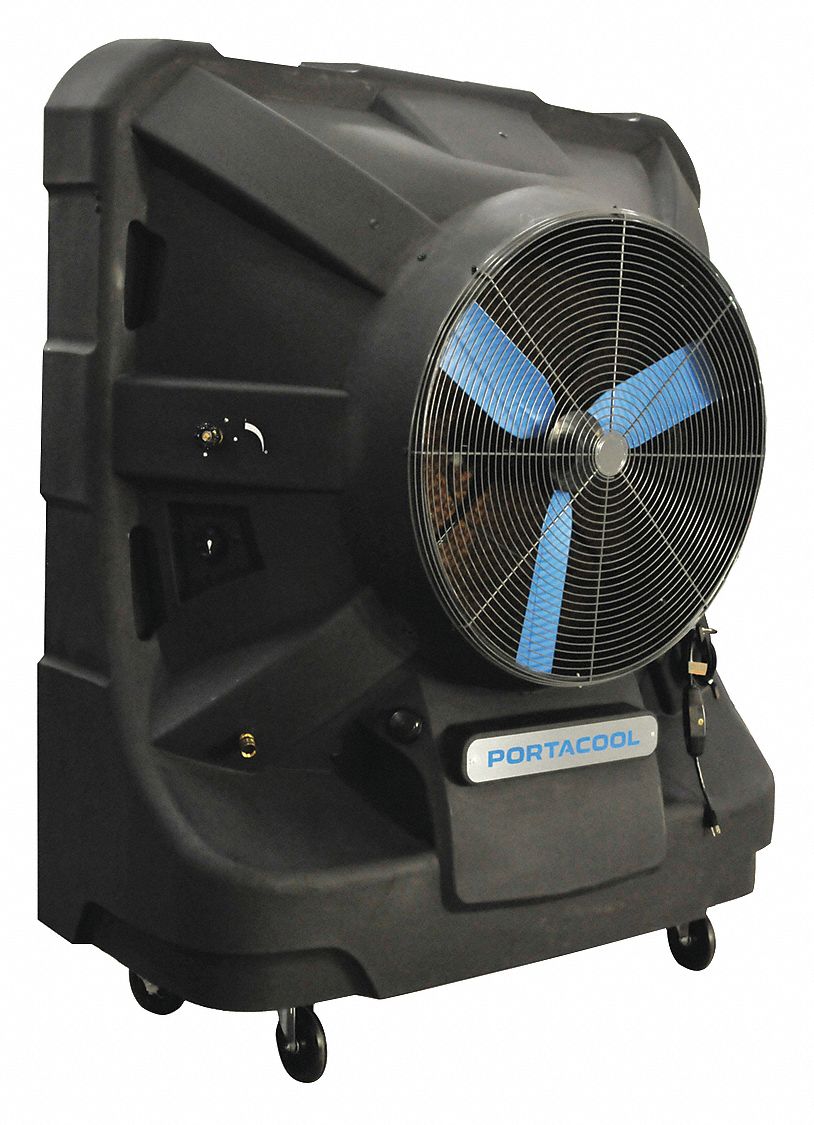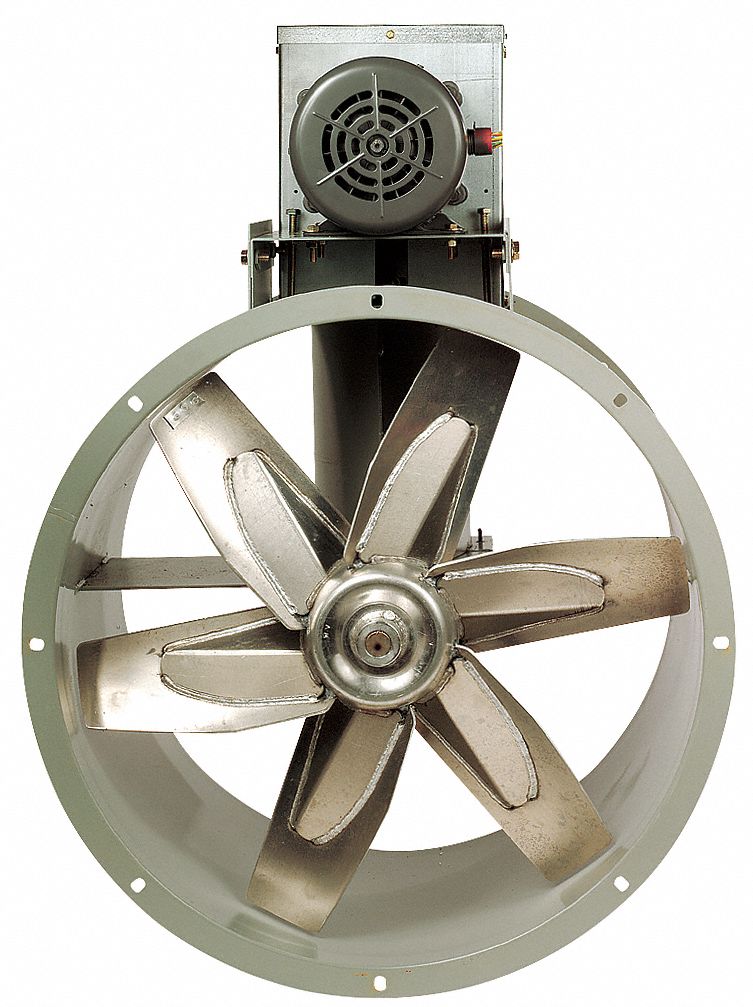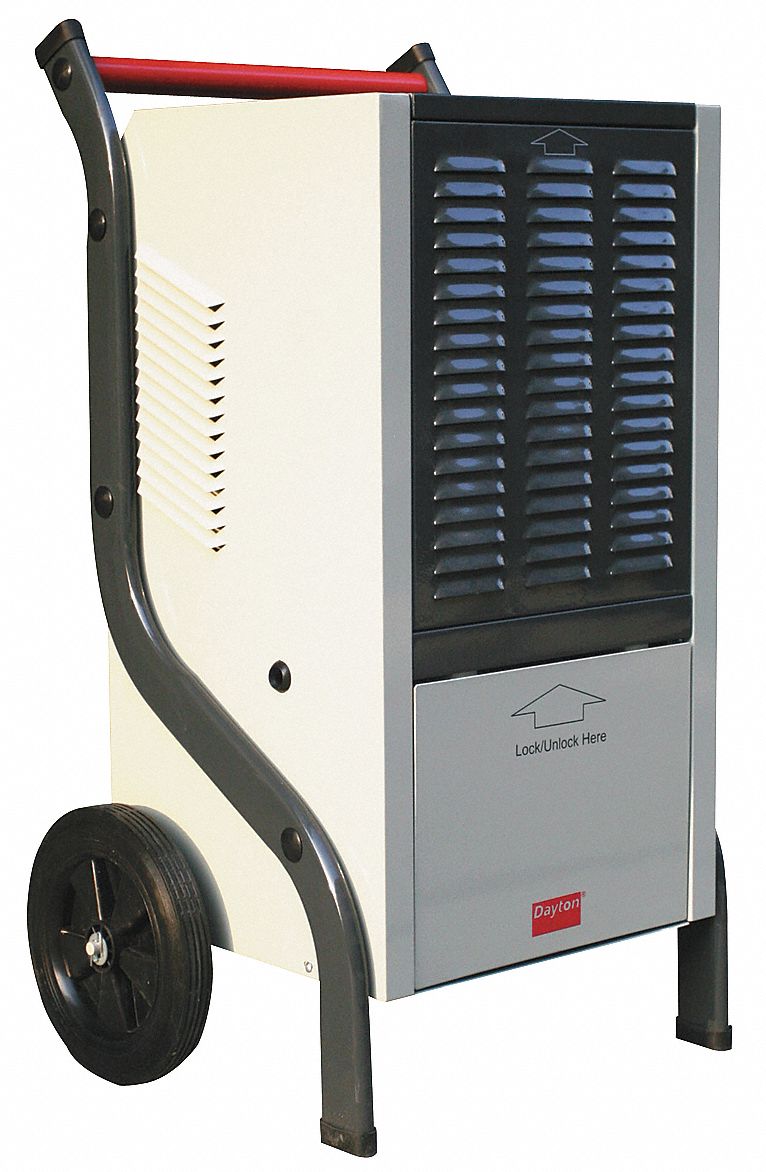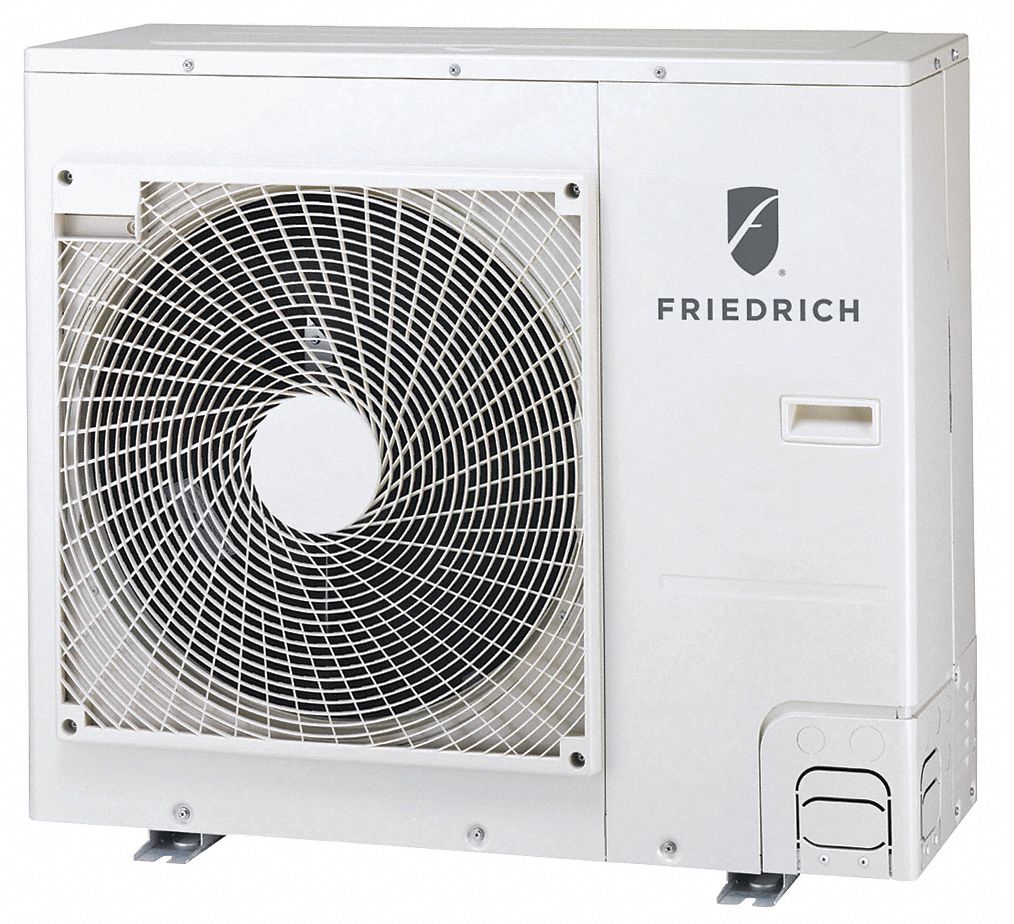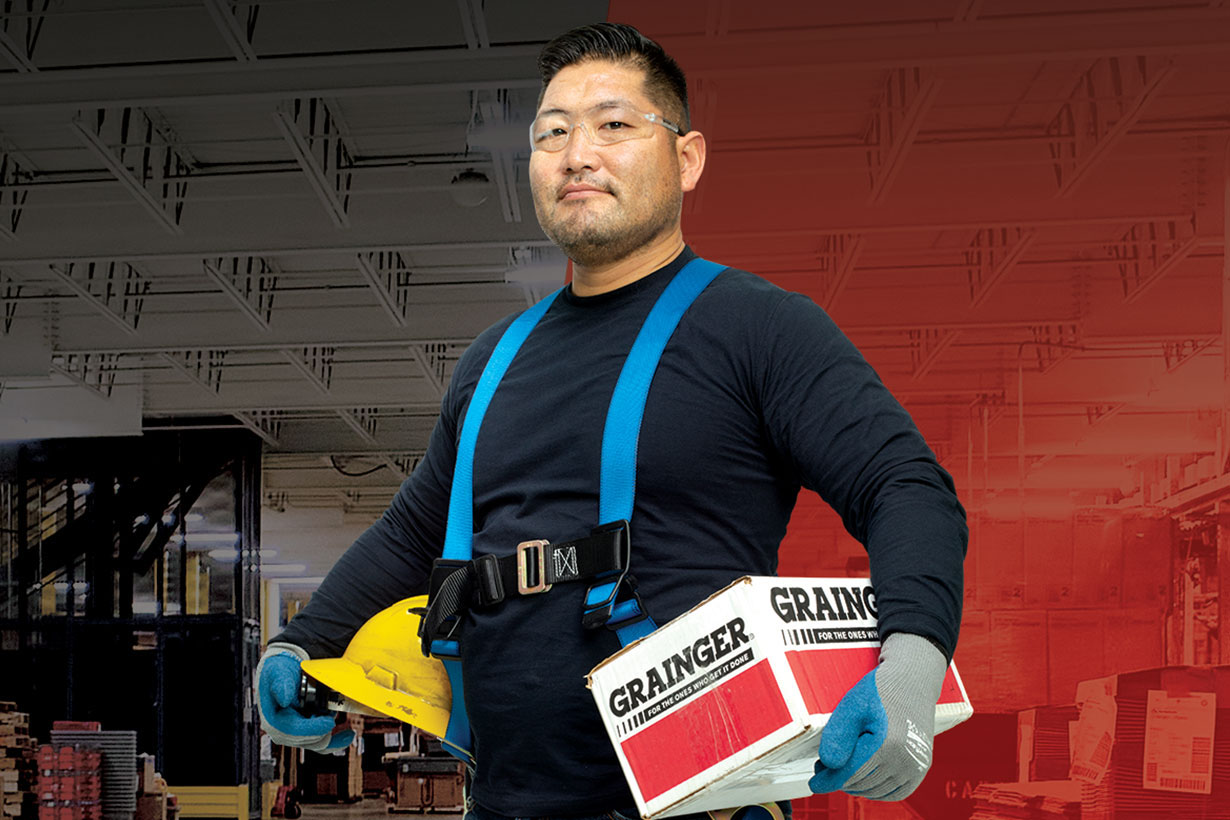

Ventilation in the Workplace Prevents Heat Stress
By Grainger Editorial Staff 5/10/17
Extreme heat takes a heavy toll on workers.
It reduces productivity and can lead to dangerous medical complications. However, plant managers can help reduce the dangers of heat stress by taking simple measures to reduce heat exposure and by installing and maintaining proper workplace ventilation using air circulators and ventilators.
Bringing the Heat
Under the Federal Occupational Safety and Health Act, employers have a broadly defined duty to protect workers from recognized serious hazards in the workplace, including heat-related hazards.
According to the Occupational Safety and Health Administration (OSHA), ventilation, or controlling the indoor environment via air flow, is one of the most important engineering controls available to improving workplace air quality. Ventilation is addressed in specific standards.
OSHA standards and standard interpretations (official letters of interpretation of the standards) related to ventilation for general industry are covered under 29 CFR 1910 Subpart G, Occupational health and environmental control; and 29 CFR 1910.94, Ventilation. OSHA standards for the construction industry are covered under 29 CFR 1926 Subpart D, Occupational health and environmental controls, and under 29 CFR 1926.57, Ventilation.2Other industries also have specific standards.
Areas where ventilation may be deficient include:
- Confined spaces
- Windowless areas
- Facilities operated to maximize energy conservation
- Areas with high occupant densities
Ventilation to the Rescue
Stagnant air in an industrial facility is never a good thing. Moving air through supply and exhaust ventilation, on the other hand, not only cools the workplace environment and makes it more comfortable, it also helps control airborne contaminants to acceptable levels. Industrial ventilation can also help prevent fire and explosions, and control temperature, humidity, and odors.
Scientific evidence suggests that maintaining indoor temperatures near the center of the comfort zone (71 F) and providing higher ventilation rates can increase work performance. Balancing airflow to various sections of a building can help maintain desired temperatures.
Installing and maintaining building ventilation systems can help ensure that desired ventilation rates are maintained. To enable installation of a viable ventilation system, adequate access must be provided to air-handler components for measurements and maintenance.
There can be substantial benefits to increasing ventilation rates above the minimum values specified in industry standards and codes. Examples of this strategy include:
- Using exhaust ventilation at localized sources of indoor air pollutants and moisture generation, such as in kitchens and bathrooms
- Increasing ventilation rates to remove pollutants when painting, cleaning and waxing floors
- Locating the outdoor air intakes of mechanical ventilation systems away from sources of pollutants such as sanitary vents, combustion vents, garbage dumpsters, etc
- Adding dehumidification systems
Ventilator Variety
There is a wide range of industrial ventilation devices, ranging from portable fans to large-scale, permanently installed, industrial-scale ventilators.
There are two primary types of fans, propeller fans and duct fans. Propeller fans produce airflow that is parallel or axial to the shaft on which the propeller is mounted. They are used in low-static-pressure, high-volume applications. Duct, or tubeaxial, fans produce airflow parallel or axial to the shaft on which the propeller is mounted. The propeller is housed in a cylindrical tube or duct. This design enables duct fans to operate at higher static pressures than propeller fans.
Another type of ventilation device is the centrifugal blower, where with the air flow is perpendicular to the shaft on which the wheel is mounted. The wheel is mounted in a scroll-type housing, which is needed to develop rated pressures.
The four classes of centrifugal blowers are distinguished by wheel blade position with respect to the direction of rotation. The four types are:
- Forward curve, in which the blade tips are inclined in the direction of rotation (used in light-duty exhaust systems)
- Backward incline, in which the tips of the blades are inclined away from the direction of rotation (used in heavy-duty, industrial operations)
- Radial blade, which employs straight blades that are mostly self-cleaning (useful for handling grease-laden air)
- Inline (square centrifugal) fans, where the air, after leaving the impellers, is contained in a square housing and, by means of turning vanes, is discharged axially (used when exhaust needs to be directed away from the fan direction)
Fan Club
Industrial air circulators, or fans, are very useful for delivering spot cooling, ventilation and circulation in hot environments. They are used in many workplaces, including factories, warehouses, schools and storage facilities. Plant managers should be able to identify when circulators are needed, including the following circumstances:
- Does employee productivity decrease during the summer months when temperatures are elevated?
- Do employees complain about the lack of airflow in the workplace?
- Do processes or equipment produce heat that could be dissipated by air circulators?
- Do certain manufacturing or assembly processes create a large amount of condensation?
- Are there products or components that should be cooled after manufacturing?
Determining which air circulators are appropriate for different work environments depends on factors such as what type of power is available in the facility and if air circulators need to be portable or stationary. Plant managers also need to determine the ambient temperatures in the areas where the air circulators will be located. Finally, it needs to be determined if hazardous vapors or gases are present and if the air circulator will be in an area that is frequently washed down via high-pressure cleaning.
Depending on how plant managers answer those questions, they can choose from a wide range of high-efficiency, variable-speed air circulators
Standard air circulators include:
- Fixed or oscillating 115 volt. They typically deliver 3,055 to 12,500 cubic feet per minute (CFM) of airflow. Oscillating versions swivel, providing cooling over a 90 arc area.
- 208-volt, 277-volt and 3-phase. These energy-efficient, high-voltage circulators provide an economical way of cooling industrial workplaces.
- Air cannons, which are designed to move high volumes of directed airflow at low velocities.
Specialty air circulators include these types of models:
- Safety circulators. Housings are yellow to make them easily visible.
- Wash-down circulators, used in areas where washdowns are frequent, such as beverage and food processing facilities. They feature dual-voltage motors for multiple applications. Their CFM range is typically 4,700 to 10,000.
- Hazardous operations circulators feature dual-voltage motors for multiple applications. Propellers are made of nonferrous, spark-resistant materials and can use a cast-aluminum propeller. They are used in operations such as oil and gas plants, battery rooms and environments where grain dust is present.
- Misting circulators can be placed on the ground or mounted overhead. They are typically not used in manufacturing operations.
Powering Up to Ventilators
Ventilators are usually larger scale, permanently mounted air moving devices. A typical warehouse or manufacturing facility might include a combination of ventilators, including:
- Axial belt-driven upblast exhaust ventilators. These roof-mounted fans are designed for general ventilation in industrial and commercial buildings such as warehouses, manufacturing facilities, foundries and laboratories.
- Belt-driven, wall-mounted, cabinet exhaust fans for commercial and industrial applications that require high volumes of air at low static pressures.
- Hooded gravity roof ventilators for applications that require gravity ventilation or can be used in conjunction with powered exhaust, supply or reversible fans.
- Weather hoods, which are used with exhaust and supply propeller fans to protect the wall opening from rain, snow and debris.
- Emergency smoke exhaust ventilators that discharge contaminants up and away from industrial and commercial buildings.
- Industrial direct-drive exhaust fans that move large volumes of air at higher static pressures for ventilating factories, foundries and other industrial environments.
- Centrifugal downblast exhaust ventilators that provide continuous operation to meet the clean-air-exhaust requirements of industrial and commercial buildings.
- Gas-fired make-up air units for commercial kitchen applications or industrial buildings with process exhaust.
In addition to having installed ventilators like these, most industrial plants also use a variety of air circulators, such as those mentioned above.
Viva Ventilation
Circulating air has a powerful cooling effect and consumes much less energy than air conditioning units. To protect their workers, plant managers need to be aware of the dangers of heat stress and make sure that their operations have a well-designed and well-maintained industrial ventilation system to help combat those dangers.
Sources
- Protecting Workers from Heat Illness (OSHA): https://www.cdc.gov/niosh/docs/2011-174/pdfs/2011-174.pdf
- OSHA: https://www.osha.gov/SLTC/ventilation/index.html Berkeley National Laboratory, Implications for Good Ventilation Practices: https://iaqscience.lbl.gov/vent-practices
The information contained in this article is intended for general information purposes only and is based on information available as of the initial date of publication. No representation is made that the information or references are complete or remain current. This article is not a substitute for review of current applicable government regulations, industry standards, or other standards specific to your business and/or activities and should not be construed as legal advice or opinion. Readers with specific questions should refer to the applicable standards or consult with an attorney.

